Enquiry form – Caddesk Hyderabad
Book A Free Demo Loading… Trusted BY 550+ Leading Companies Are Hiring From Us Hiring clients is selecting and recruiting customers based on their purchasing

Book A Free Demo Loading… Trusted BY 550+ Leading Companies Are Hiring From Us Hiring clients is selecting and recruiting customers based on their purchasing
Your Skills, Our Commitment – Guaranteed Interview Opportunities! Home Contact Us Skill Up with Caddesk Hyderabad – Interviews Guaranteed The Interview Guarantee Program is designed to
Enroll Now Learn Real-Time Rendering Like a Pro with D5 Render Caddesk Hyderabad offers the best D5 Render training in Hyderabad, designed to teach realistic
Enroll Now Boost Your Engineering Career with SolidWorks Training Caddesk Hyderabad provides the best SolidWorks training in Hyderabad, focusing on practical, industry-based learning. The course

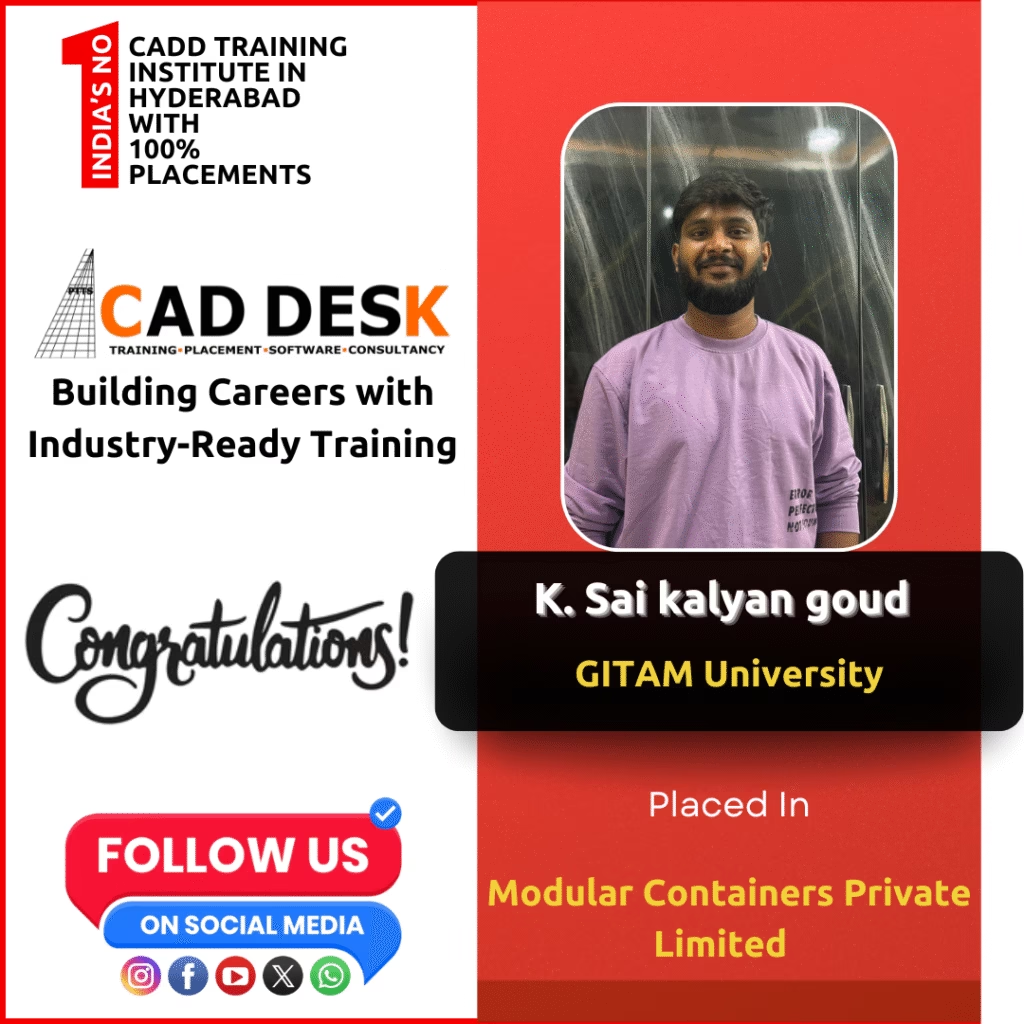







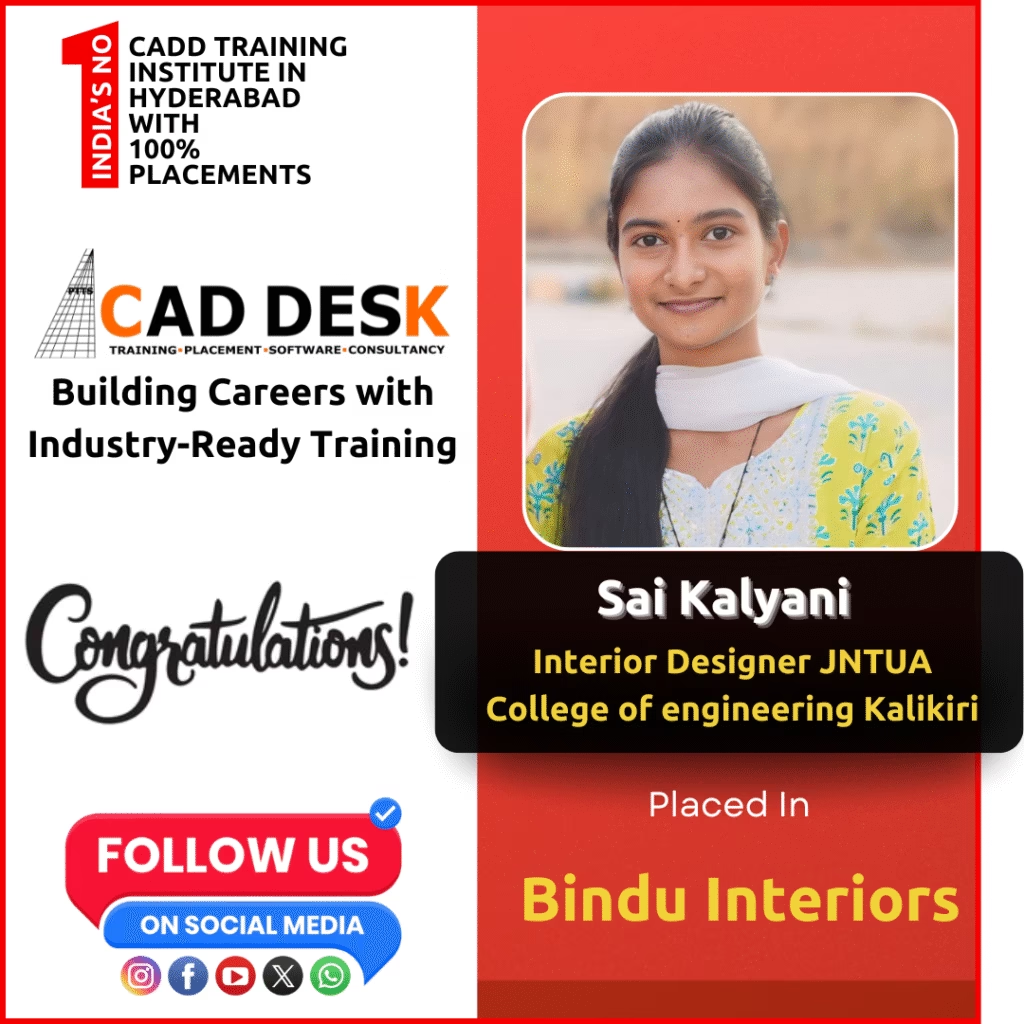


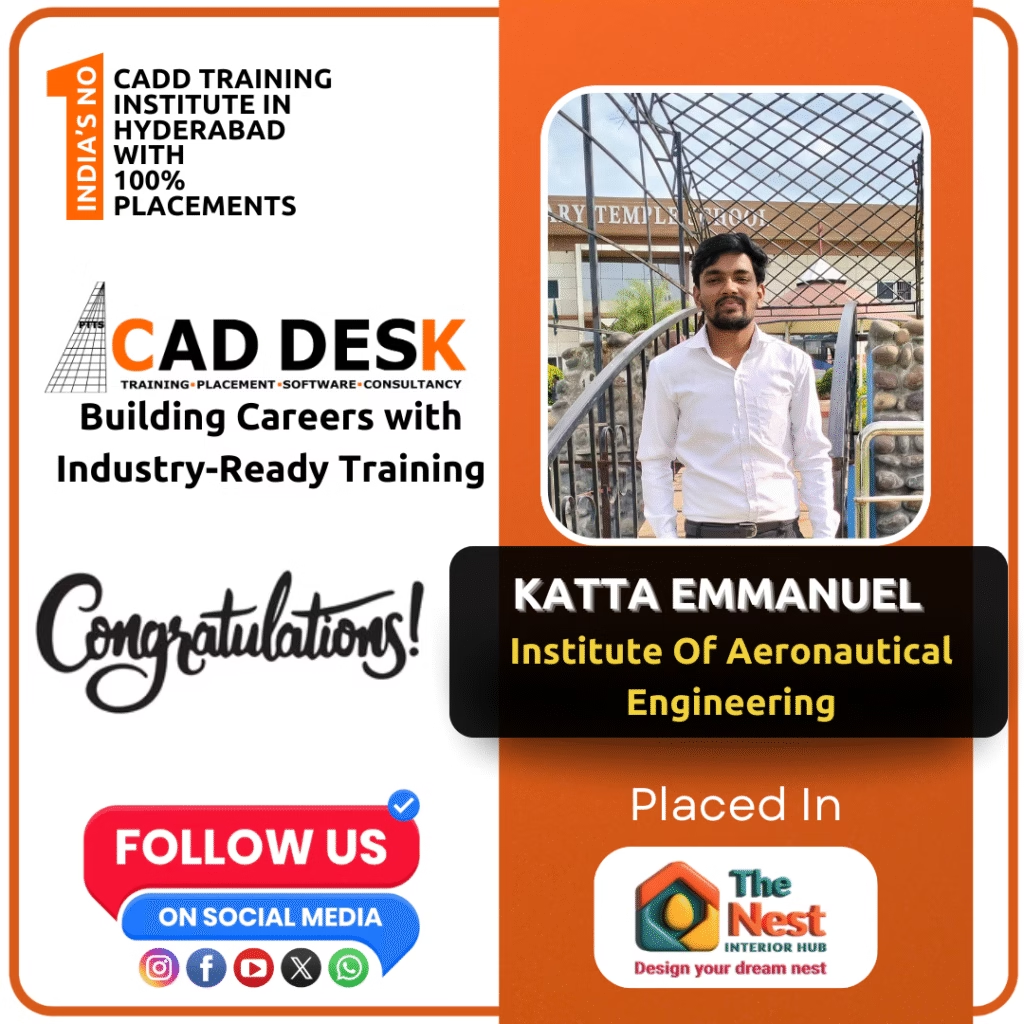

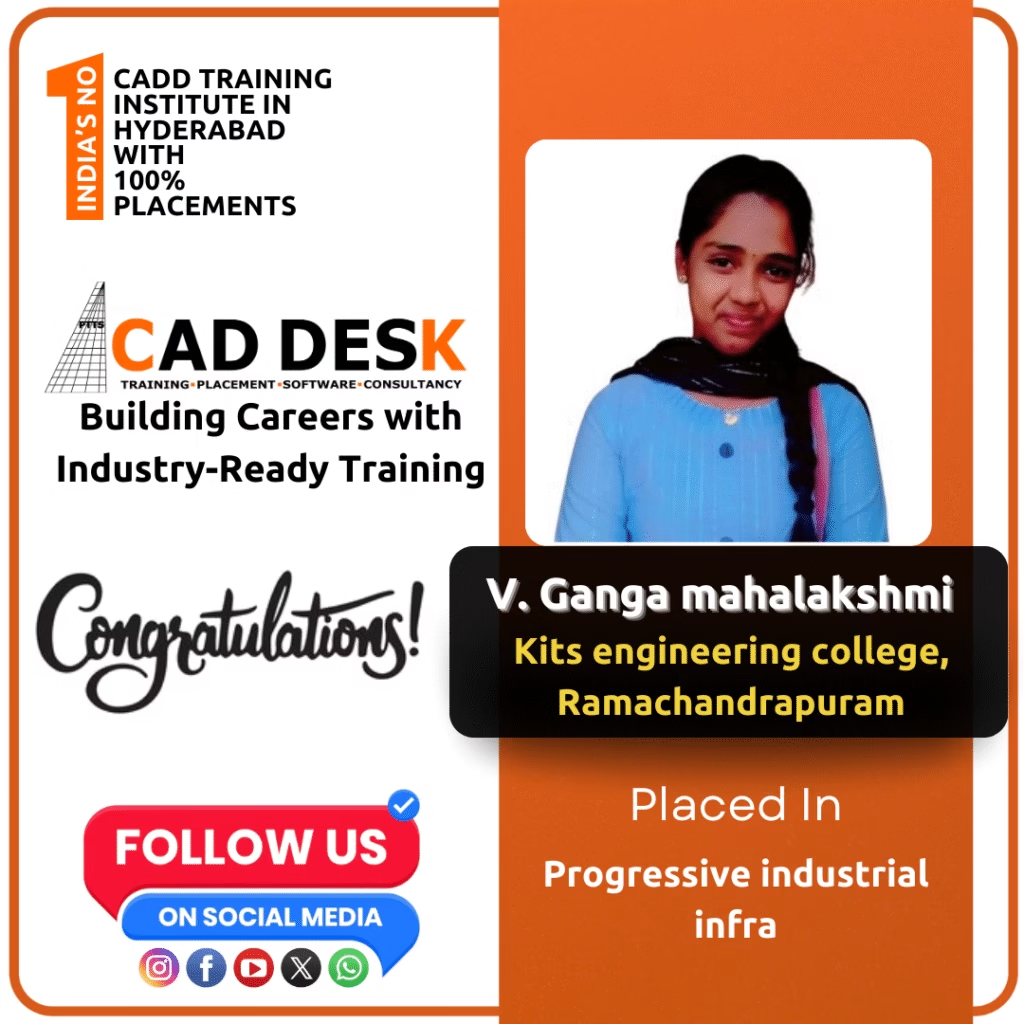
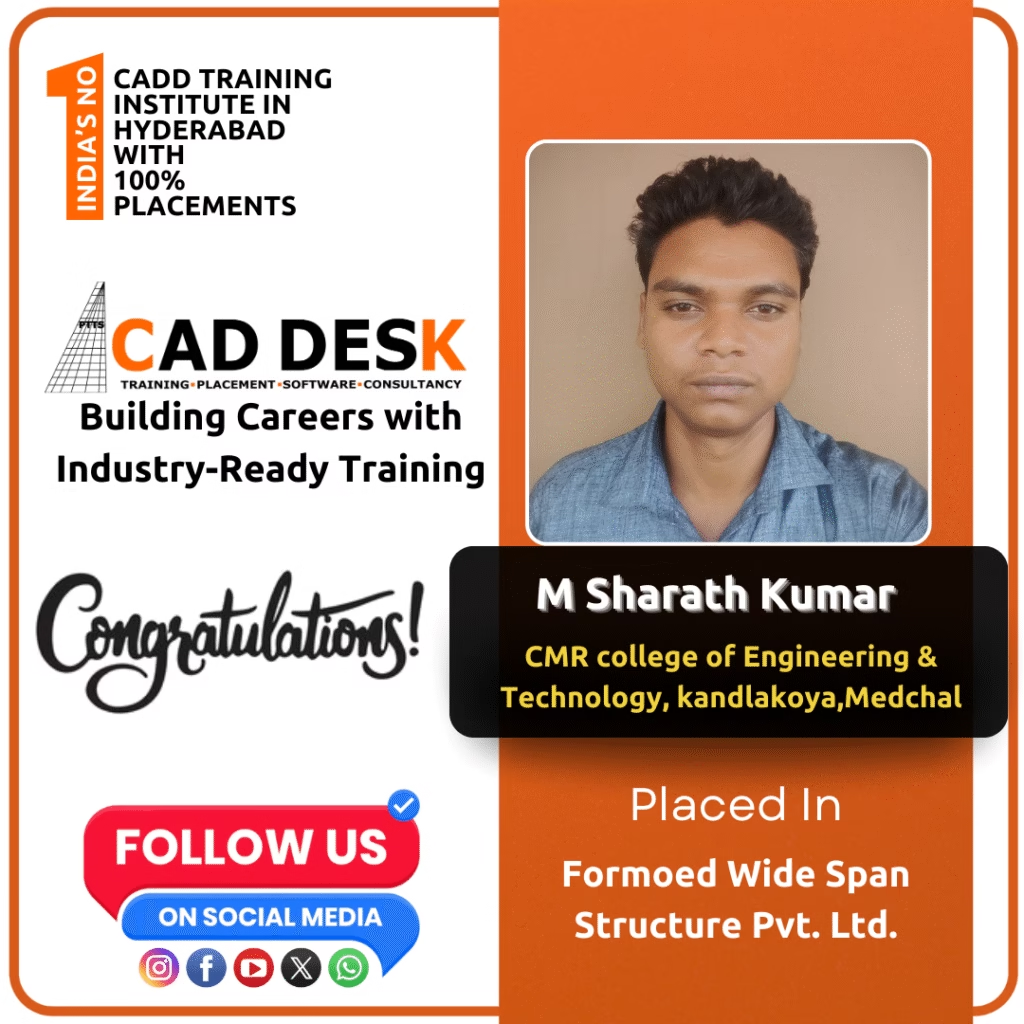


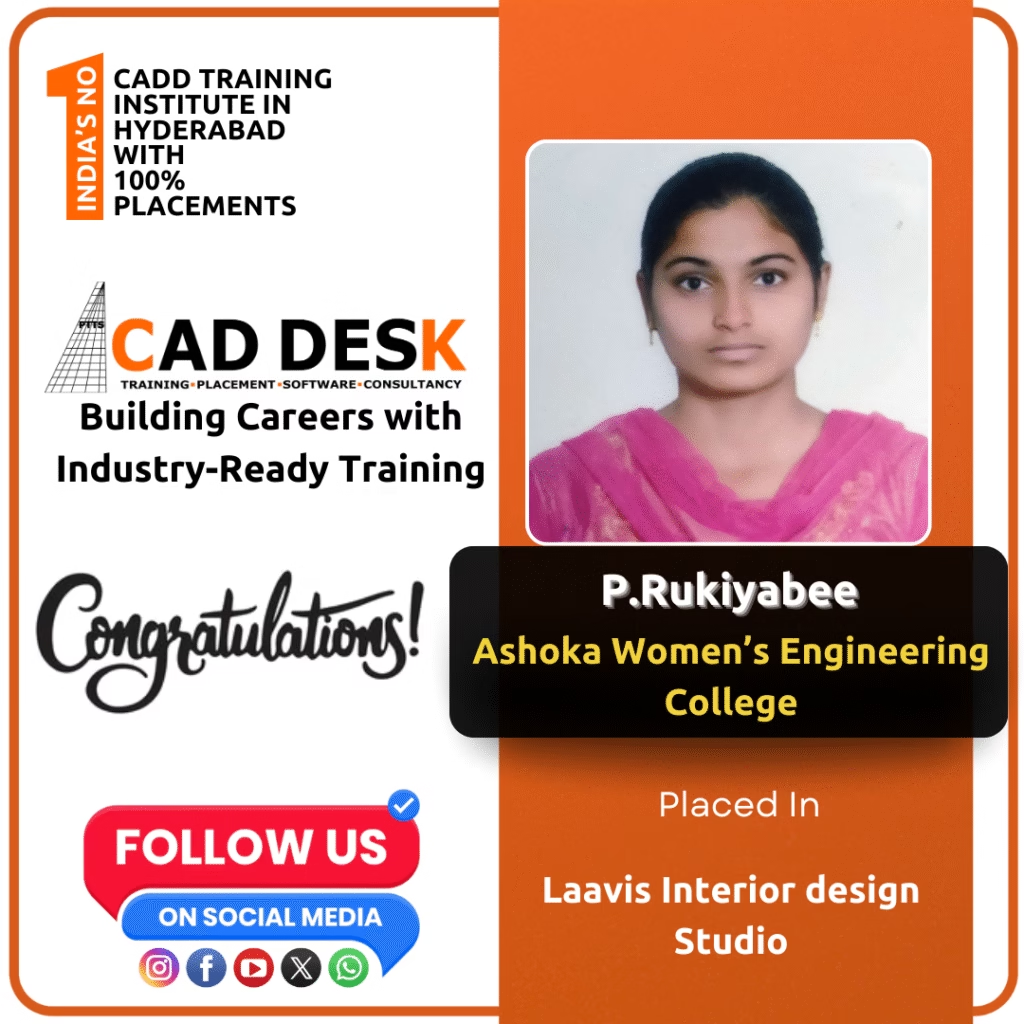
















































Catia Course By Caddesk Hyderabad provides comprehensive training in the use of CATIA software, which is widely used by engineers and designers in the fields of automotive, aerospace, and industrial design. The Catia training covers topics such as 3D modeling, sketch-based features, assembly design, surface modeling, and sheet metal design. The Catia course is suitable for both beginners and experienced professionals who wish to develop their skills in CATIA. The Catia software training is delivered by experienced trainers who have pool of knowledge, real-time experience, and hands-on exercises to teach the concepts and tools of CATIA. The course also provides job placement for the students upon completion of the training.
Caddesk is the best Catia training institute in Hyderabad for several reasons. Firstly, we have experienced trainers with in-depth knowledge of the software and can guide students effectively. Secondly, their training methodology is practical oriented, which helps students to understand the software better. Thirdly, we provide a comprehensive course curriculum that covers all aspects of the software. Fourthly, Caddesk Hyderabad has very good infrastructure and resources that encourage students to practice and learn the Catia software more effectively. We offer 100% placement assistance and groom students in soft skills and interview techniques to help our students to secure a job in the industry. All of these factors make Caddesk Hyderabad the best Catia training institute.
1. Industry Standard Software:
CATIA is widely used in industries such as automotive, aerospace, and manufacturing. Learning CATIA provides you with valuable skills that are in demand in the job market.
2. Versatility:
CATIA is a popular software that can be used for a range of applications, including product design, simulation, analysis, and manufacturing. This versatility makes it a valuable tool across different industries.
3. Complex 3D Modeling Capabilities:
CATIA excels in handling complex 3D models, making it suitable for designing intricate and detailed products. This is particularly important in industries where precision and accuracy are critical.
4. Collaborative Design and Teamwork:
CATIA software supports collaborative design, allowing multiple team members to work on a project simultaneously. This promotes efficient teamwork, especially in large-scale engineering and design projects.
5. Integration with Other Software:
CATIA can be integrated with other software tools, such as analysis and simulation software. This integration streamlines the design and engineering process, allowing for more comprehensive product development.
6. Parametric Design:
CATIA supports parametric design, which means that changes made to one part of the design can automatically update related components. This feature enhances design efficiency and makes it easier to implement changes during the design process.
7. Realistic Rendering and Visualization:
CATIA provides advanced rendering and visualization tools, allowing designers to create realistic representations of their designs. This is beneficial for presentations, marketing materials, and design reviews.
8. Career Opportunities:
CATIA can open up various career opportunities in industries such as automotive, aerospace, electronics, and consumer goods. Many employers specifically seek candidates with CATIA software skills.
9. Simulation and Analysis:
CATIA includes simulation and analysis tools, enabling engineers to evaluate the performance of their designs virtually. This can help identify potential issues early in the design process, saving time and resources.
10. Global Standard Certification:
Completing a CATIA course training may lead to certification, demonstrating your proficiency in using the software. This certification can enhance your credibility and marketability in the job market.
The Online Catia Course by Caddesk Hyderabad is a comprehensive program designed to provide students with a solid foundation in the use of Catia software for designing and modeling. The course covers various topics, including sketching, part design, assembly design, surface design, and drafting. The program uses an interactive approach to teaching, with practical exercises and real-world projects that simulate industry-grade scenarios. As an online course, students can access the material anywhere and anytime, making it convenient for those with busy schedules. Caddesk Hyderabad offers training from experts with industry experience, ensuring students receive a quality education that is relevant to industry needs.
1. CATIA is a leading design software used in various industries such as aerospace, automotive, and manufacturing, among others.
2. Career opportunities in CATIA course include design engineers, CAD engineers, CAE analysts, product designers, and manufacturing engineers.
3. Various industries such as automotive, aerospace, defense, and consumer goods are in need of skilled CATIA professionals.
4. Skilled CATIA professionals have high earning potential due to the high demand for their skills.
5. Completing a CATIA course can also lead to career advancement opportunities such as project managers, team leaders, and technical specialists.
6. Many companies offer training and certification programs in CATIA, which can increase job opportunities and earning potential.
7. A CATIA course can also offer the opportunity to specialize in a specific industry or field, such as surface modeling or advanced assembly design.
8. The skills obtained in a CATIA course can also be applied to other design software programs, expanding job opportunities even further.
Understanding the purpose and features of CATIA
Navigating the CATIA interface and workbenches
Configuring settings and units for precise modeling
Importing and exporting 3D models in different file formats
Creating 2D sketches with lines, arcs, circles, and other tools
Applying constraints and dimensions to sketches
Turning sketches into 3D parts using features like extrusions and revolutions
Utilizing advanced part design tools for complex shapes
Assembling components and parts into complex assemblies
Applying constraints and relations for assembly motion
Exploring exploded views and animations
Analyzing interferences and clearance checks
Creating smooth and organic shapes with surface modeling
Working with surface tools and techniques in CATIA
Blending, trimming, and extending surface bodies
Integrating surface and solid modeling for complex designs
Introducing sheet metal design in CATIA
Creating and unfolding sheet metal parts
Adding bend reliefs and flanges to sheet metal designs
Preparing flat patterns for fabrication and manufacturing
Utilizing generative shape design tools for complex geometries
Creating lofted surfaces, splines, and multi-section surfaces
Advanced shape manipulation and refinement techniques
Performing structural and static analysis of parts
Analyzing stress, deflection, and other mechanical properties
Simulating part behavior under various loads and conditions
Creating 2D drawings and technical documentation
Annotating and dimensioning drawings
Customizing title blocks and templates
Exporting drawings for print and digital formats
Designing mechanical components or parts
Assembling complex machinery or equipment
Creating consumer products or industrial machines
Introduction to Product Data Management and its benefits
Utilizing PDM tools for version control and collaboration
Managing design changes and revision history